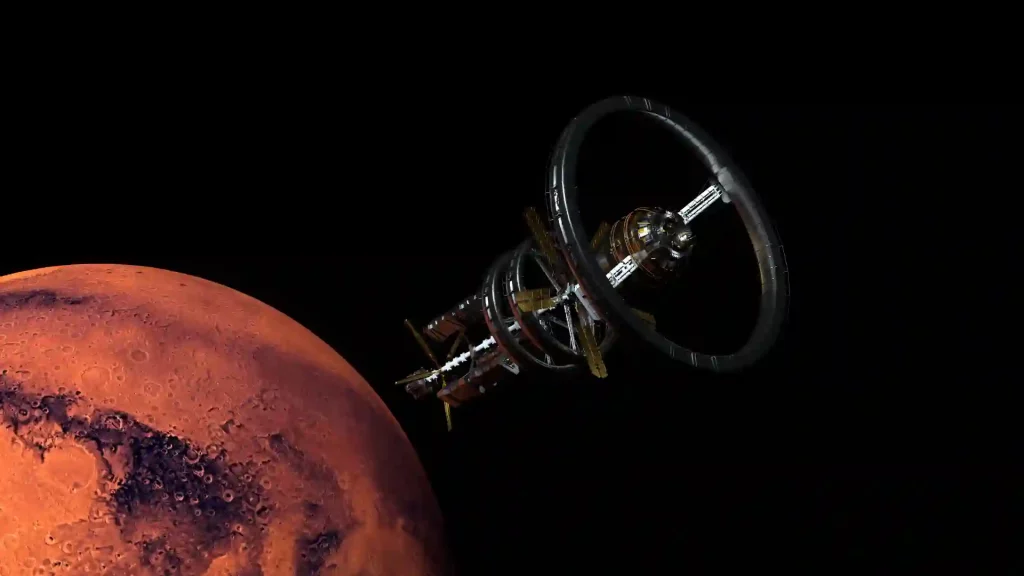The United Arab Emirates has announced its plans to send another spacecraft to tour the asteroid belt located between Mars and Jupiter. Earlier, they had sent a spacecraft named Hope which is currently circling Mars. Hope‘s successor will be launched by 2028.
The spacecraft has been named MBR Explorer after the ruler and prime minister, Sheikh Mohammed bin Rashid al-Maktoum. The ruler said that the project period would be 13 years, with 6 years for development and seven years for exploration. It would cover a distance of 5 billion kilometres (3 billion miles). This distance would be 10 times what the Hope Probe covered.
The United Arab Emirates held the crown of being the only Gulf country and the second country to successfully enter the orbit of Mars.
The Roadmap Ahead
In February 2030, the spacecraft will reach Westerwald, a 1.4-mile-wide asteroid. It would travel at a speed of 20,000 miles per hour and visit six more objects located in the debris field between Mars and Jupiter. The spacecraft would terminate in 2034 at Justitia, the seventh asteroid, which could give more insights into the genesis of life on Earth.
The last among the seven, Justitia, is the most fascinating one. It is of a very unseen colour for an asteroid, really reddish. The 30-mile-wide rock appears more like the small icy worlds located in the Kuiper belt that revolve around the sun past the orbit of Neptune.
Planetary scientists anticipate that Justitia was formed in the outer areas of the solar system and then was pushed inwards and ultimately joined the asteroid belt by the orbital shifting of giant planets.
The MBR Explorer is planned to enter into the few hundred feet zone of Justitia by October 2034. It will study the asteroid’s composition with high-precision cameras and spectrometers for seven months, and it will also look for the availability of water. The reddish colour is due to the carbon-based molecules which are essential for building up living matter. It will drop a small lander to study the surface of Justitia because scientists expect the presence of a lot of organic matter on the surface bed.
Small Steps Taken By The UAE For The Big Leap
The United Arab Emirates is a newcomer in the space industry. Just two decades it didn’t even have its space program. But now, it is rapidly fueling the R&D activities to leap ahead in the high-tech industry, thanks to oil revenues.
The Middle Eastern region has made substantial progress in recent years. Two weeks ago, Saudi sent two of its astronauts for the very first time to the International Space Station (ISS). This led the UAE astronaut Sultan al-Neyadi to become the first Arab to take a spacewalk. Back in 2019, Hazzaa al-Mansoori became the first Arab to land on the ISS.
The Emirati Kingdom has been working in the space field for more than a decade. They had launched their first satellite, DubaiSat-1, built in South Korea, where the Emirati engineers worked as apprentices. Nine years down the line, they were able to build a satellite, KhalifaSat, for observing Earth, without external help at the Mohammed bin Rashid Space Center in Dubai.
The Emirates had to seek out foreign help for their Mars mission. They recruited help from the Laboratory for Atmospheric and Space Physics at the University of Colorado Boulder.
Hope was launched in July 2020 and reached the orbit of Mars after seven months. It is currently studying how dust storms in the lower atmosphere affect the intensity at which Mars’ thin atmosphere escapes into space. It has sent high-resolution pictures of the smaller one of the two Martian moons, Deimos.
Sarah al-Amiri, chairwoman of the United Arab Emirates Space Agency, said that after the Emirates Mars Mission, they were looking at what happens beyond in the solar system. The asteroid belt came as an appropriate challenge.
Pete Withnell, the project manager for the Emirates Mars Mission, said that the Colorado Laboratory would have a greater engagement in their asteroid mission. He added that due to the participation of other organisations, the new spacecraft will be assembled in Colorado for the second time.
This time the Italian Space Agency has agreed to provide one of the spectrometer instruments, and the Malin Space Science Systems from San Diego will build two cameras. But there is a requirement which is to manufacture most of the parts in the Emirates. The criteria is to spend 50% of the money within the country to develop the domestic industry.
